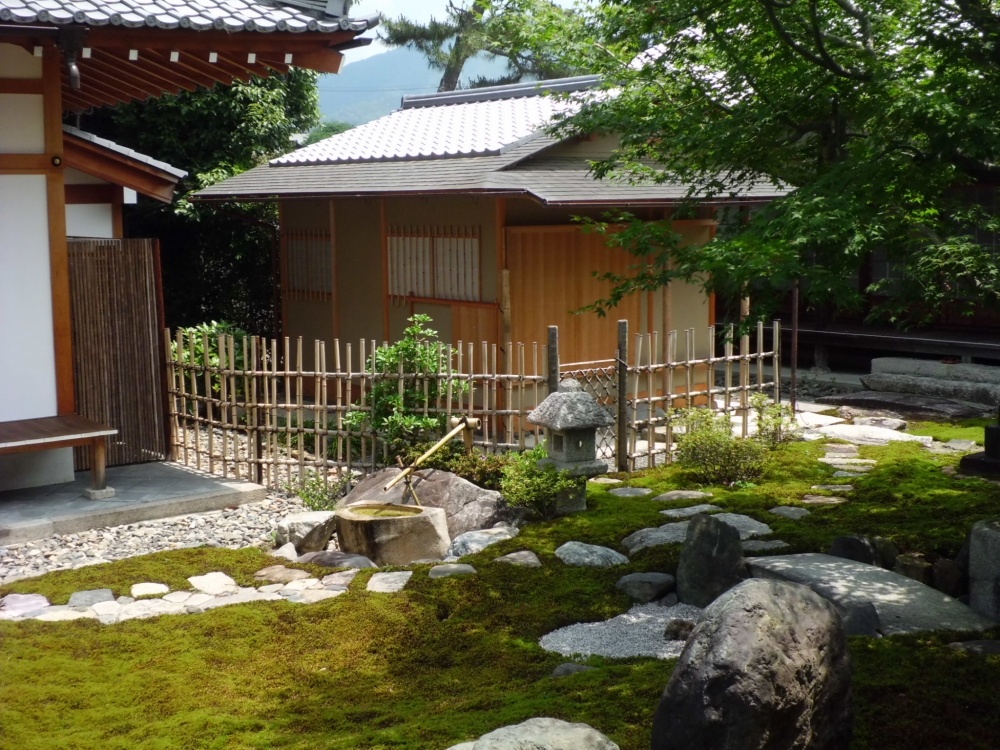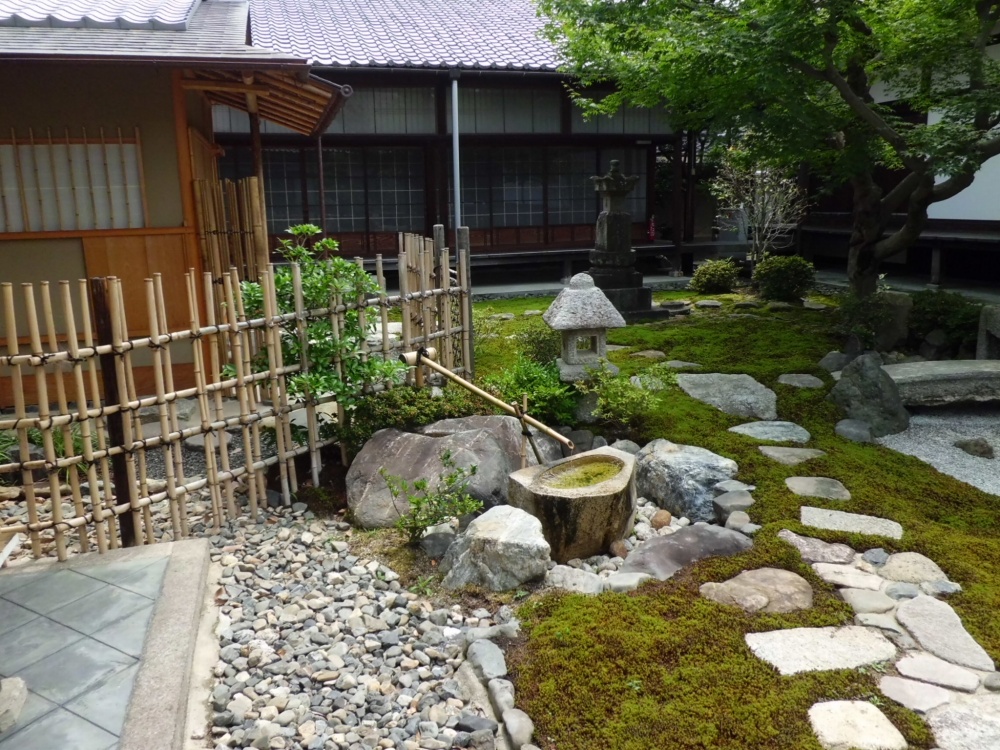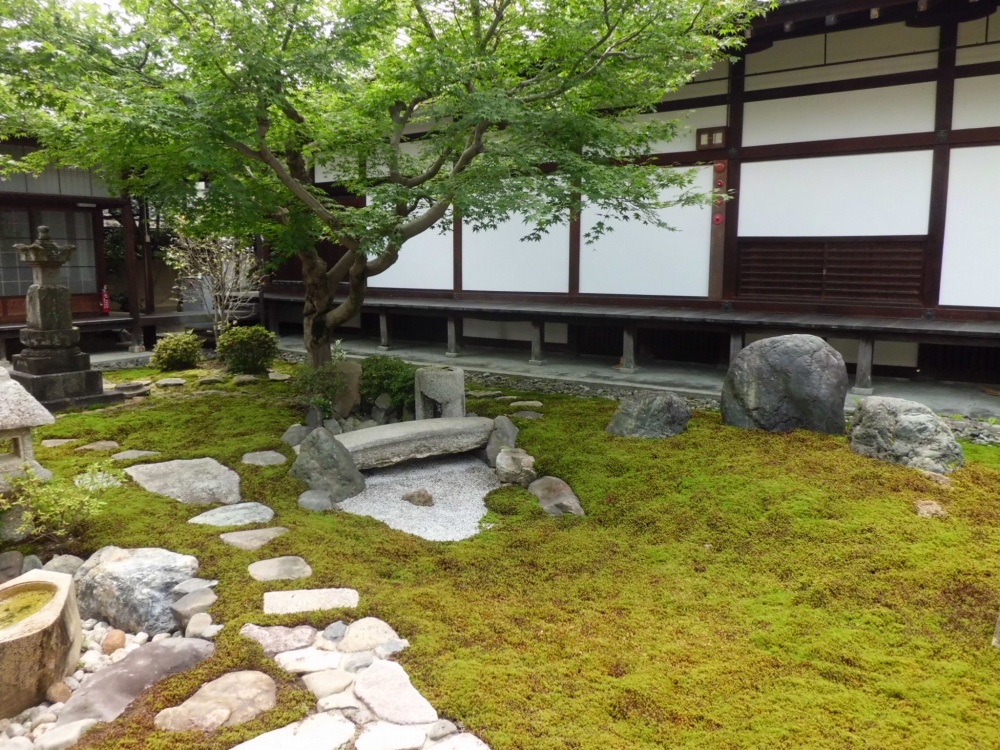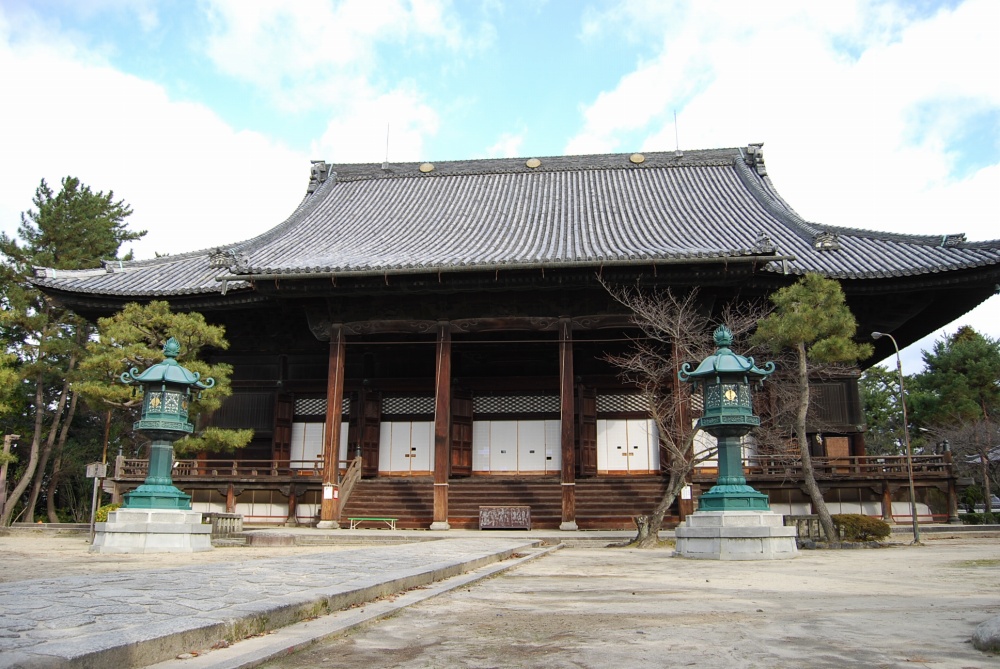Hyakumanben Chion-ji TempleGardens created|Gardens managed
Chion-ji Temple is also known by the more proper name of Hyakumanben Chion-ji Temple. Its history begins when Honen took up residence at a Buddhist chapel (jingu-ji) in Kamigamo Shrine. After Honen's death, his disciple Genchi named the chapel Chion-ji Temple ("Temple of the Knowledge of Virtue") in memory of Honen's virtue. Emperor Go-Daigo later named the temple Hyakumanben, meaning "one million times," a reference to chanting the name of the Amida Buddha one million times. The temple was relocated several times before settling in its current location in 1662.
To commemorate the 800th anniversary of Honen's death, Ueyakato Landscape was commissioned to create a garden to the south of Chion-ji Temple's Small Abbot Hall (kohojo). The garden expresses Honen's teaching that three minds are required to chant the name of the Amida Buddha and four modes of practice to enter the Pure Land paradise. As we move from left to right, the garden expresses the three minds ("sincerity," "profundity," and "turning all desire upon entering the Pure Land") and uses scenic stones to express the four modes of practice ("reverence," "wholeheartedness," "ceaselessness," and "long-term practice").
The garden makes it easier to feel the three minds in Honen's teachings. Its camellia trees and leopard plants are allusions to "sincerity" and "profundity" in Japanese flower poetry. Likewise, the moss is an expression of the sea that also evokes "profundity." And a stone bridge expresses the circulation of virtue that occurs by "turning all desire upon entering the Pure Land." The three stones set at the garden's middle rear and left-hand side form a Buddhist triad stone arrangement expressing both the Amida Buddha flanked by the bodhisattvas Kannon and Seishi, and also Honen as the Chion-ji Temple founder with his second and third successors Genchi and Shin'e.
Through these and other techniques, we created a garden befitting the head temple of Japan's Pure Land sect of Buddhism.
Location: Sakyo-ku, Kyoto
Accessibility: open to the public
Garden construction period: in 2011







